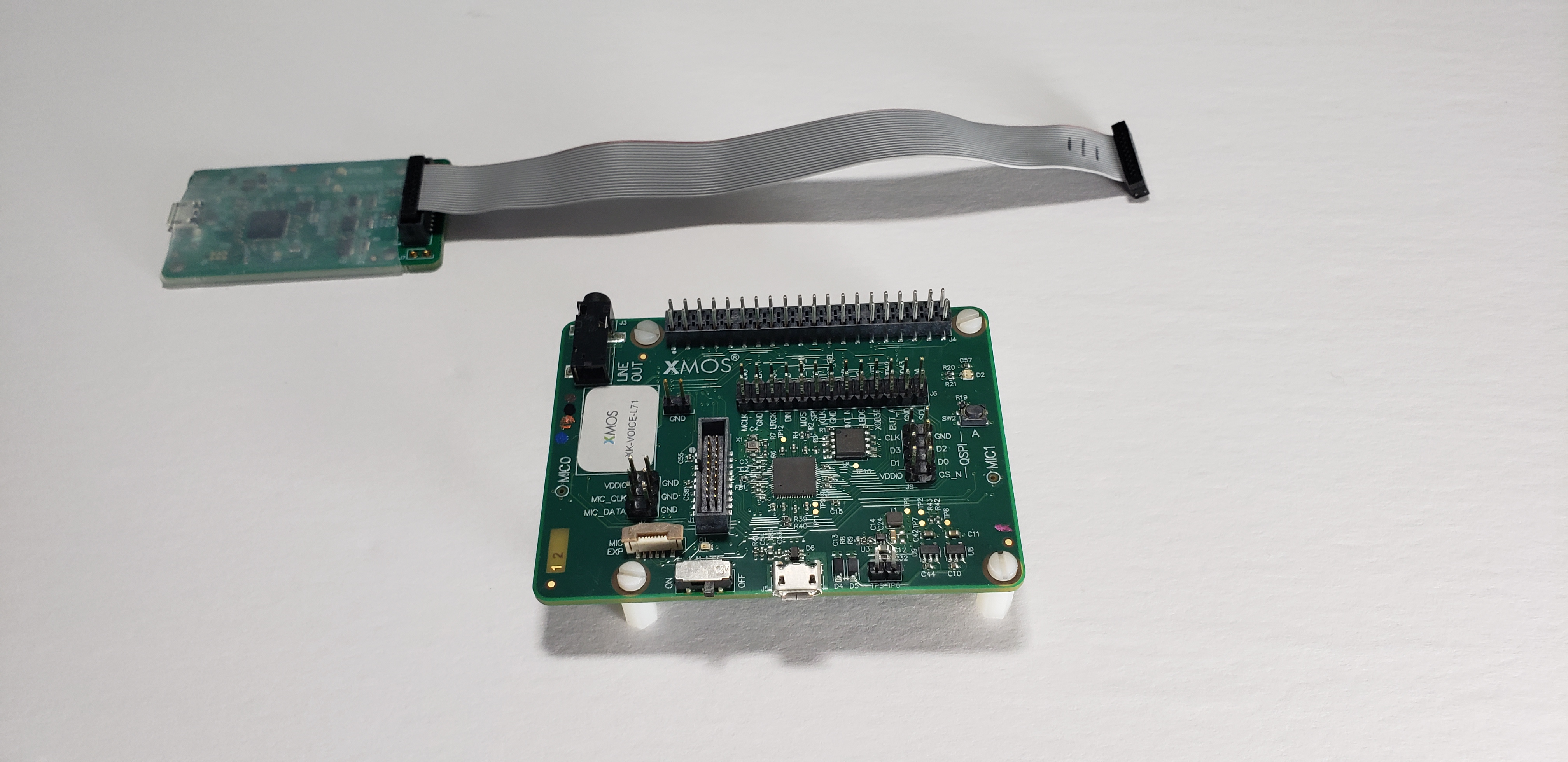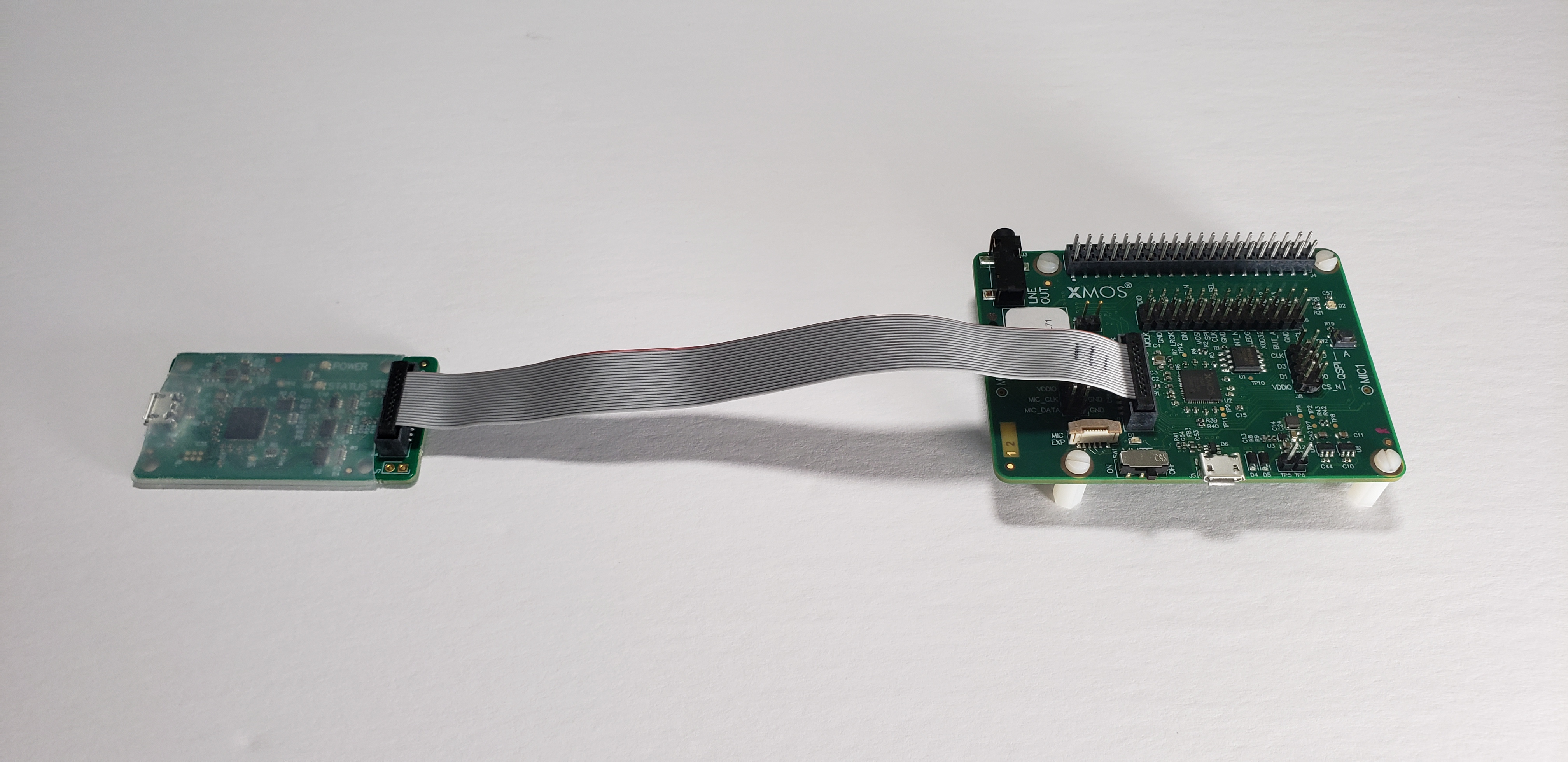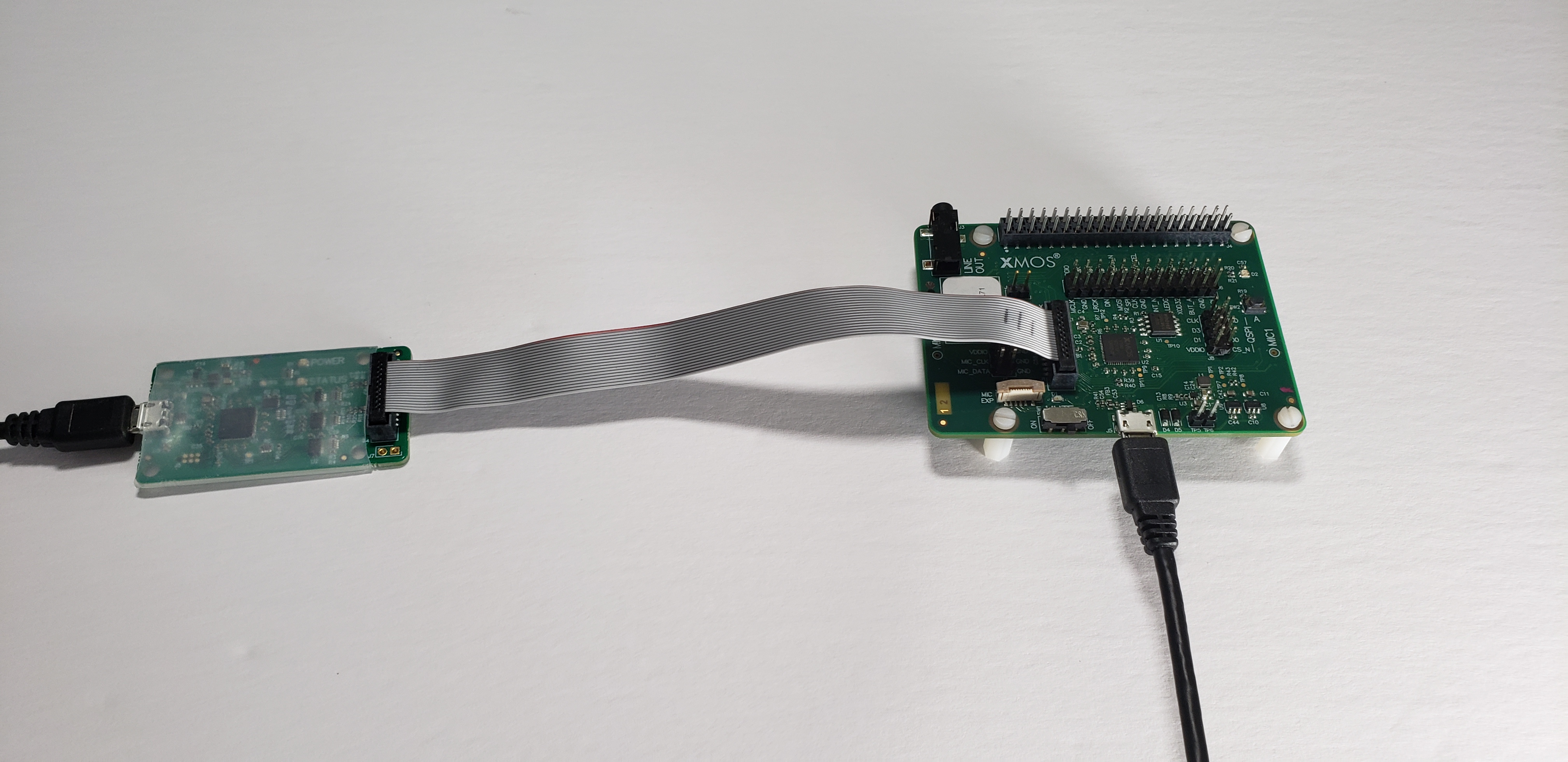Far-field Voice Local Command#
Overview#
These are the XCORE-VOICE far-field local control example designs demonstrating:
2-microphone far-field voice control with I2C or UART interface
Audio pipeline including interference cancelling and noise suppression
16-phrase English language speech recognition
Example designs#
Low-power Wake-up Demonstration#
This is the low-power far-field voice local command (FFD) example design with Wanson speech recognition and local dictionary.
While inactive, low-power mode uses a fraction of energy otherwise required by normal operations while awaiting and processing speech.
When a wake-up phrase is followed by an command phrase, the application will output an audio response and a discrete message over I2C and UART.
This software is an evaluation version only. It includes a mechanism that limits the maximum number of recognitions to 50. You can reset the counter to 0 by restarting or rebooting the application. The application can be rebooted by power cycling or pressing the SW2 button.
Note
Due to the hardware design, SW2 is only functional when in full-power operation.
Requirements
XK-VOICE-L71 board
Powered speaker(s) with 3.5mm jack connection (OPTIONAL)
Hardware Setup#
This example design requires an XTAG4 and XK-VOICE-L71 board.

Connect the xTAG to the debug header, as shown below.

Connect the micro USB XTAG4 and micro USB XK-VOICE-L71 to the programming host.

Speakers (OPTIONAL)#
This example application features audio playback responses. Speakers can be connected to the LINE OUT on the XK-VOICE-L71.

Running the Demonstration#
Flashing the Firmware#
Connect the XTAG4 via USB to the host computer running the XTC tools, and power on the board directly via USB.
On the host computer, open a XTC Tools Command Prompt.
xflash --quad-spi-clock 50MHz --factory example_ffd.xe --boot-partition-size 0x100000 --data example_ffd_data_partition.bin
Being returned to the prompt means flashing has completed, and the XTAG4 may be disconnected.
Speech Recognition#
Speak one of the wakewords followed by one of the commands from the lists below.
There are three LED states:
Flashing Green = Full Power, Waiting for Wake Word
Solid Red & Green = Full Power, Waiting for Command
Solid Red = Low Power
The application rests in low-power mode (solid red) until the audio pipeline detects audio, thereby entering full-power mode (flashing green) to begin wake-up phrase recognition. Upon recognizing ‘Hello XMOS,’ waiting begins for a command (solid red & green). After a period of inactivity, low-power mode resumes.
Wakewords
Hello XMOS
Dictionary Commands
Switch on the TV
Switch off the TV
Channel up
Channel down
Volume up
Volume down
Switch on the lights
Switch off the lights
Brightness up
Brightness down
Switch on the fan
Switch off the fan
Speed up the fan
Slow down the fan
Set higher temperature
Set lower temperature
Test Wake-up and Low-power Functionality#
Once flashing is complete, the application is now running on the board.
Observe application state. While not detecting sufficient acoustic activity, the demo enters low-power mode. Observe the solid red LED.
Say, “Far field voice local control”. The demo enters full-power mode, waiting for the wake-up phrase. Observe the flashing green LED.
Speak the wake-up phrase, “Hello XMOS”. The demo plays a recognition tone and awaits a command for a time. Observe the solid red and green LEDs.
Say, “Switch on the lights”. The demo recognizes this command, and replies an acknowledgement over speakers, I2C and UART.
The demo awaits more commands. Say, “Volume up”. After another acknowledgement, the board will continue to wait for commands.
After a period of inactivity, a power-down tone plays and low-power mode resumes.